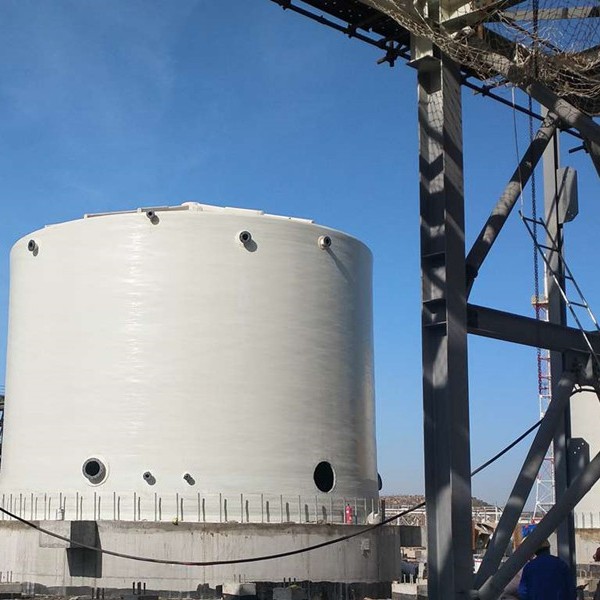frp rectangular tube
The Versatility of FRP Rectangular Tubes
Fiberglass Reinforced Plastics (FRP) have become a pivotal material in numerous industries, thanks to their exceptional properties and versatility. Among the various structural shapes available, FRP rectangular tubes stand out for their unique advantages. This article delves into the composition, benefits, applications, and future prospects of FRP rectangular tubes.
Composition and Characteristics
FRP rectangular tubes are constructed from a polymer matrix reinforced with fiberglass. This combination results in a material that is not only lightweight but also possesses impressive strength and rigidity. The manufacturing process typically involves the use of pultrusion or extrusion techniques, enabling the production of tubes with precise dimensions and uniform wall thicknesses. The option of customizing the resin types allows for variations in chemical resistance, UV stability, and thermal properties, catering to specific application needs.
One of the defining characteristics of FRP is its non-corrosive nature. Traditional materials such as steel and aluminum are susceptible to rust and degradation over time, especially when exposed to harsh environments. In contrast, FRP rectangular tubes exhibit remarkable resistance to corrosion from chemicals and moisture, making them ideal for environments where metal counterparts would fail.
Advantages of FRP Rectangular Tubes
1. Lightweight One of the primary advantages of FRP rectangular tubes is their lightweight nature. This feature not only makes handling and installation easier but also contributes to reduced transportation costs and less structural load.
2. High Strength-to-Weight Ratio Despite being lighter than many metals, FRP maintains an impressive strength-to-weight ratio. This quality allows for the design of structures that require minimal material while still meeting performance criteria.
3. Corrosion Resistance As previously mentioned, FRP rectangular tubes are highly resistant to corrosive materials. This makes them especially useful in chemical processing, wastewater management, and marine applications where exposure to harsh elements is common.
4. Thermal Insulation Unlike metals, which can conduct heat, FRP offers thermal insulating properties. This aspect is particularly beneficial in applications requiring temperature regulation or protection against thermal shock.
5. Aesthetic Flexibility FRP can be manufactured in various colors and finishes, providing aesthetic flexibility for architectural applications. Its lightweight design does not compromise the aesthetic value, allowing for exciting and innovative design possibilities.
Applications of FRP Rectangular Tubes
frp rectangular tube

Given their unique properties, FRP rectangular tubes find a wide range of applications across various industries
1. Construction and Infrastructure In construction, these tubes are used for structural support, bridge components, and reinforcing existing structures due to their strength and resistance to environmental factors.
2. Marine Industry Given their corrosion resistance, FRP rectangular tubes are commonly used in boat building, dock construction, and other marine applications. They withstand the rigors of saltwater exposure much better than traditional materials, resulting in longer lifespans.
3. Electrical and Utility Poles The electrical utility industry benefits from the installation of FRP tubes as poles and supports due to their insulating properties and structural integrity, significantly reducing the risk of electrical hazards.
4. Transportation In the transportation sector, FRP rectangular tubes are utilized in the manufacturing of lightweight components for vehicles, enabling improved fuel efficiency without compromising safety.
5. Agriculture In agriculture, these tubes serve various purposes, including as structural elements for greenhouses, fencing, and irrigation systems, due to their durability and resistance to chemicals.
Future Prospects
As industries continue to seek lightweight and durable materials, the demand for FRP rectangular tubes is expected to rise. Innovations in manufacturing techniques and material formulations will likely enhance their applications, further broadening their appeal.
Additionally, as sustainability becomes a priority, FRP's long lifespan and recyclability will contribute to more eco-friendly construction practices. With research focusing on improving the production processes to reduce energy consumption, FRP materials are positioned for a bright and sustainable future.
Conclusion
In conclusion, FRP rectangular tubes represent a significant advancement in materials engineering, offering a plethora of benefits that can enhance various applications. Their combination of strength, lightweight, and resistance to environmental factors makes them indispensable across multiple sectors, paving the way for innovation and efficiency. As the technology and awareness surrounding FRP materials continue to evolve, their potential is bound to expand, further solidifying their place in the future of engineering and construction.
Latest news
-
Oblate Tanks: Space-Saving, Durable Liquid Storage SolutionsNewsAug.27,2025
-
High-Performance Piping System Solutions for Industry & Commercial UseNewsAug.26,2025
-
Precision Fittings: Durable & Reliable Industrial & Plumbing SolutionsNewsAug.25,2025
-
Practical Steps: Unlock Success with Our Proven GuidesNewsAug.24,2025
-
Transport Tanks: Safe, Durable & Efficient Liquid HaulingNewsAug.23,2025
-
High-Quality Piping Systems for Efficient Flow & DurabilityNewsAug.22,2025











